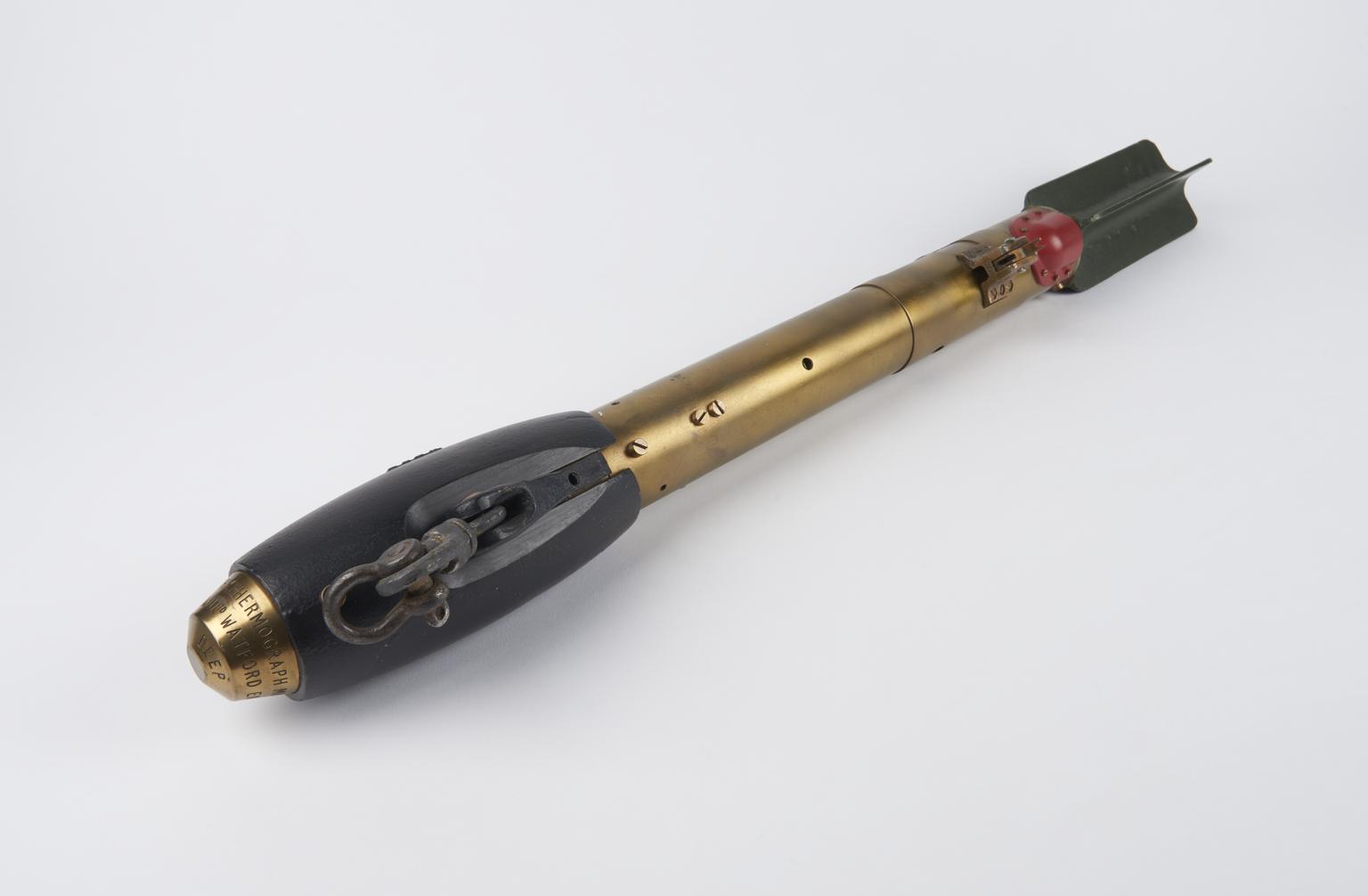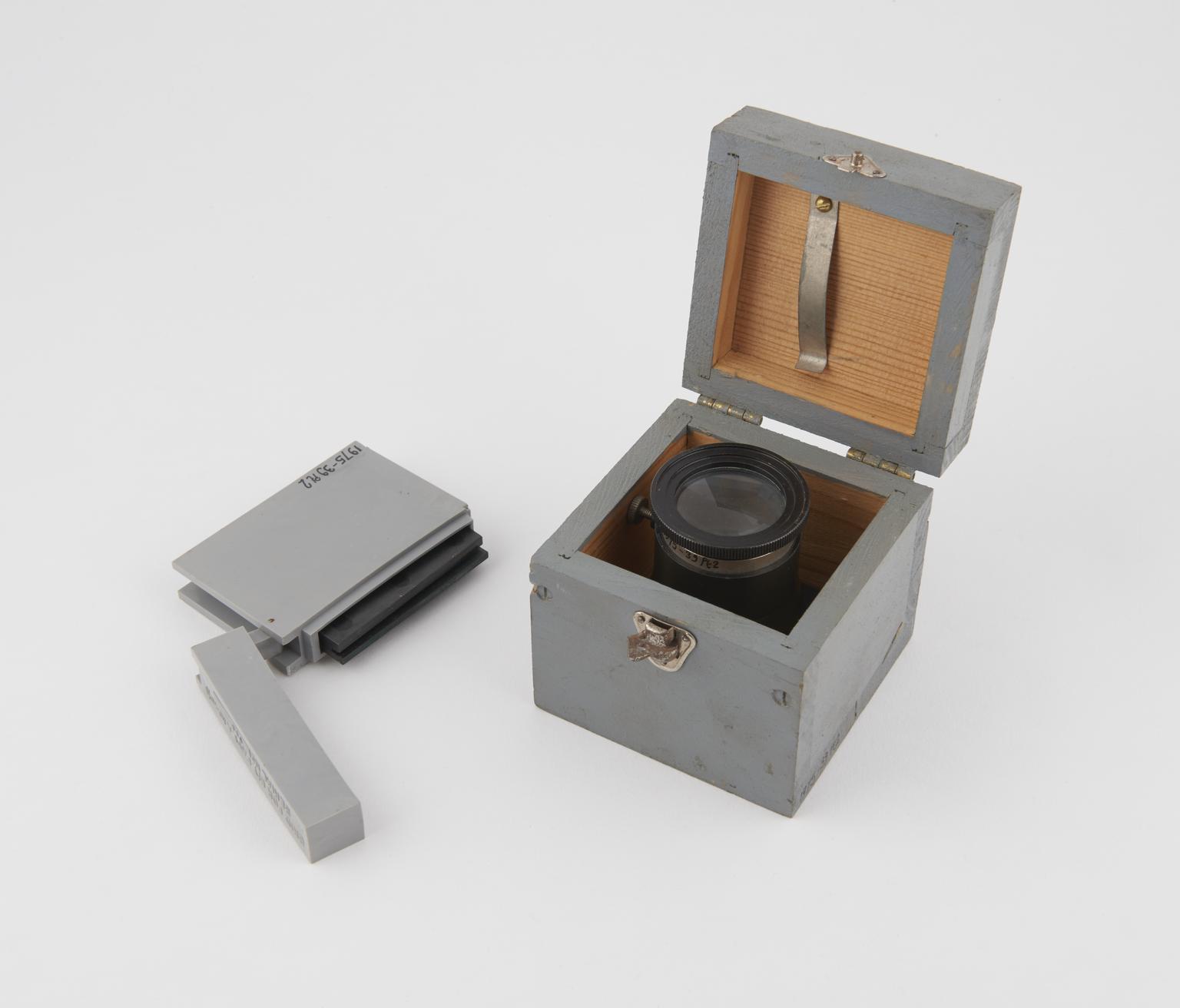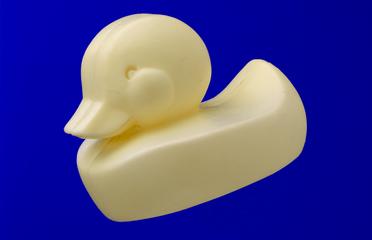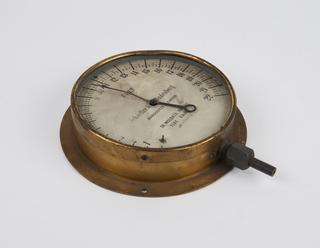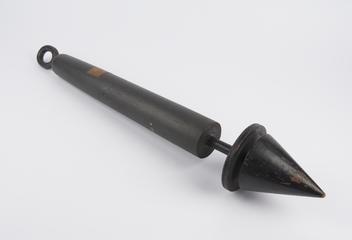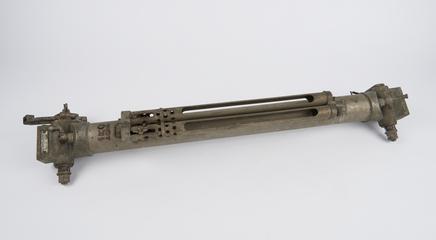Box for bathythermograph Mk 1B, ‘deep’ model
Box for bathythermograph Mk 1B, ‘deep’ model, made by S G Brown, Watford, England, c.1940.
More
The bathythermograph, initially developed in 1938, was designed to gather large amounts of data about the temperature profile of the water. This was especially valuable for submarine warfare: sonar was used to locate submarines, but since the velocity of sound through water varies with the density, knowing the temperature of the water was crucial for interpreting signals. It revealed characteristics of the thermocline, the layer of rapid temperature change between surface and deep water.
The device consisted of a thermal element, a xylene-filled coil; a pressure element which was a bourdon tube; and a stylus which was operated by these two elements together, so that it scribed onto a small smoked-glass plate a curve which was a graphic record of temperature against depth. This entire mechanism was contained within a weighted torpedo-shaped casing and in use was allowed to fall freely through the sea, attached to a thin wire line by which it was subsequently hauled up. The smoked plate was put into a calibrated viewing holder.
